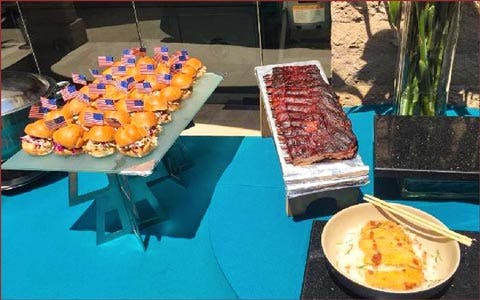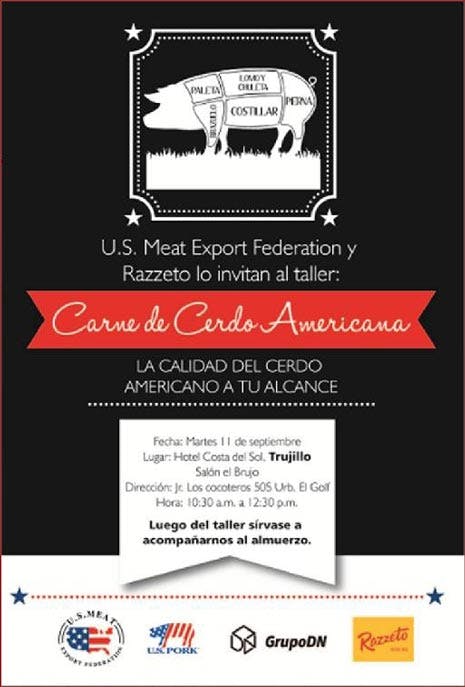Foodservice Training in Peru Provides New Ideas for U.S. Pork
Introducing thick-cut loin, chocolate-covered bacon and other menu ideas to encourage Peruvian chefs and other professionals from the hotel, restaurant and institutional (HRI) sector to use more U.S. pork, USMEF partnered with a further processing and distribution company to conduct foodservice training sessions in Trujillo, Piura and Chiclayo. Funded by the United Soybean Board, these sessions are part of USMEF’s strategy to help South American importers develop alternative distribution channels for U.S. pork.

Chef Nicolas Diaz details the advantages of U.S. pork on restaurant menus during foodservice training in Peru
“Last year, Peru’s pork imports increased nearly 60 percent, but most of that product went into further processing,” said Jessica Julca, USMEF representative in South America. “Our strategy this year has been to work with different businesses in the HRI sector to increase awareness of the many uses and advantages of U.S. pork for the region’s foodservice sector. We also want to make it easier for them to use U.S. frozen pork by explaining the importance of cold chain systems and product handling.”
USMEF’s South American staff has worked to identify trends in demand across countries like Peru. For example, Julca said that pork consumption is growing more rapidly in non-metropolitan areas of Peru than in the capital city of Lima. Thus, USMEF chose three outlying cities to hold the U.S. pork foodservice training.
Razzeto, a processing company based in Trujillo, served as an ideal partner. The company not only imports pork for its own further processing needs, it also has a sales force that distributes products in northern Peru where other importers tend not to do business. According to Julca, Razzeto imported 1,031 metric tons of U.S. pork in 2017. Through mid-September of 2018, imports were already around 950 metric tons.
At each of the three USMEF training sessions, Chef Nicolas Diaz provided host hotels with recipes, preparation details and product handling recommendations for the featured U.S. pork cuts. Diaz demonstrated techniques for preparing and cooking U.S. pork barbecue ribs, pulled pork sandwiches and thick-cut loin tonkatsu.
As a bonus, USMEF initiated discussions about using U.S. pork bacon in desserts. The demonstrations and lunches for participants included brownies with bacon praline and bacon covered with chocolate.

Pulled pork sandwiches and barbecue ribs were prepared for participants in the training sessions
“Attendees at each session were delighted with the products and the preparations – and the new ideas, especially the use of thicker cuts of pork loin and the bacon with chocolate,” said Julca. “An example of a tangible success from the trainings is that it was the first time the host hotel - Costa del Sol, which has nine hotels in Peru – worked with U.S. pork. After the training sessions, hotel management indicated it will invite Razzeto to the next bid process to supply U.S. pork to the company.”

Posters promoting U.S. pork were used to attract chefs and HRI managers to the foodservice training sessions
